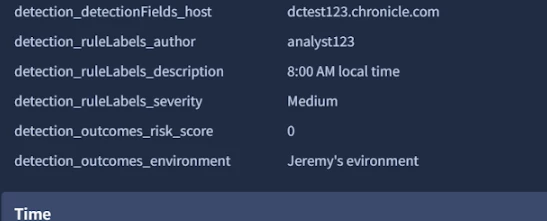Hello,
If you consider setting up two connectors that should work too with defining the Environment Variable field.
Environment Field Name |
Optional
Describes the name of the field where the environment name is stored.
If the environment field isn't found, the environment is the default environment.
Default value is "".
|
On the SIEM side you would need to define in your rules metadata which environment each alert from that rule should go to:
detection_ruleLabels_<metatagname> --- you should be able to see this in the case info

So rather than doing what you propose above you can create two connectors and have that metadata attached to the rules on the SIEM side.
Anything that matches:
detection_ruleLabels_env1 -> send to SOAR env1
detection_ruleLabels_env2 -> send to SOAR env2





